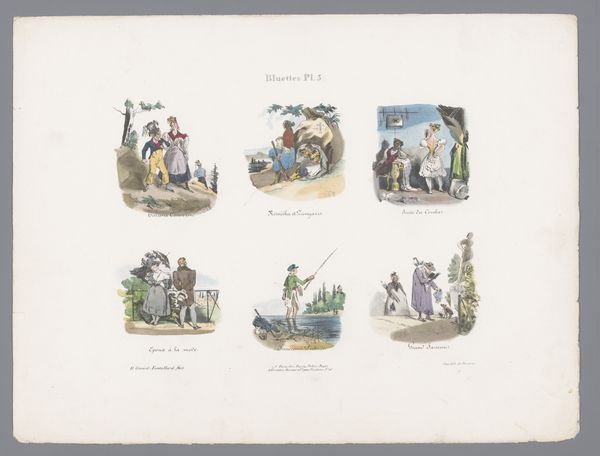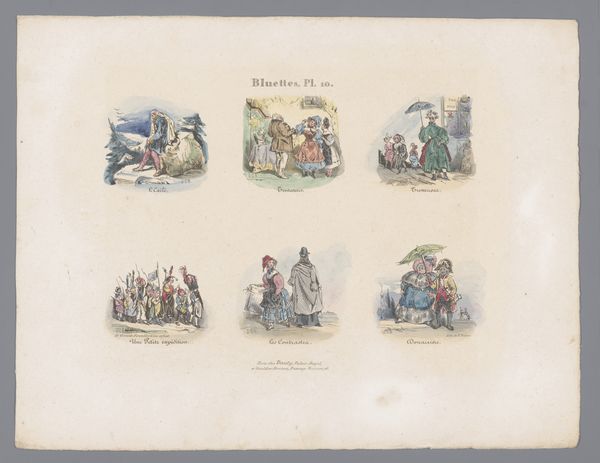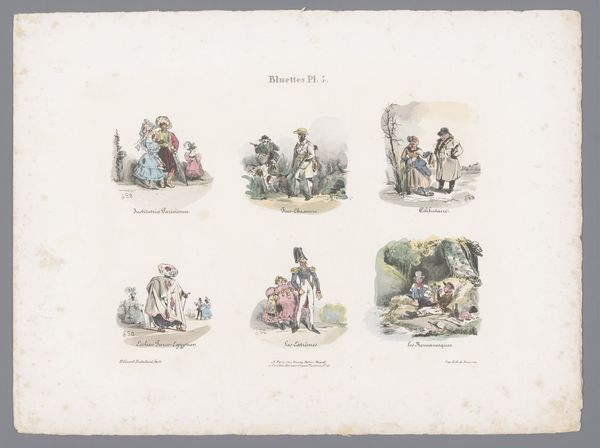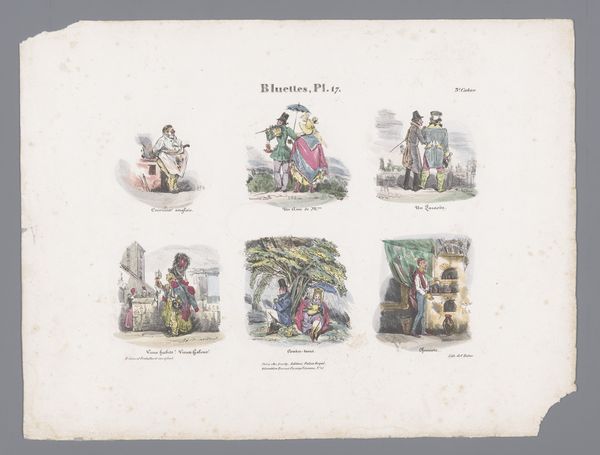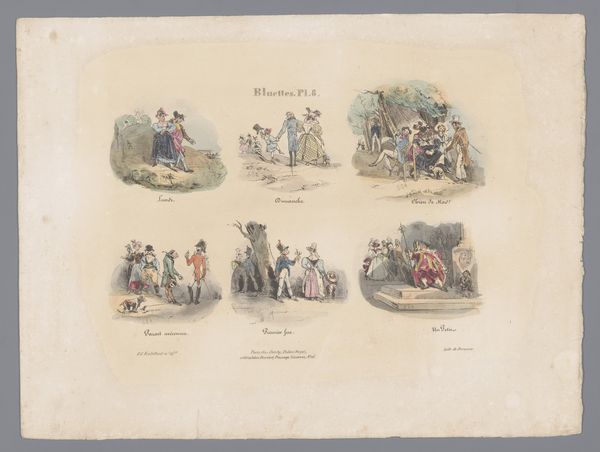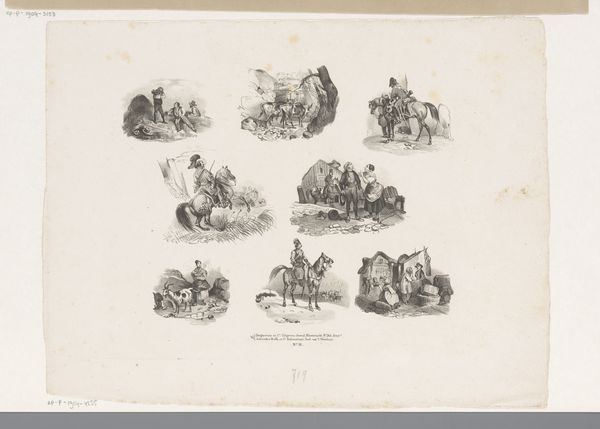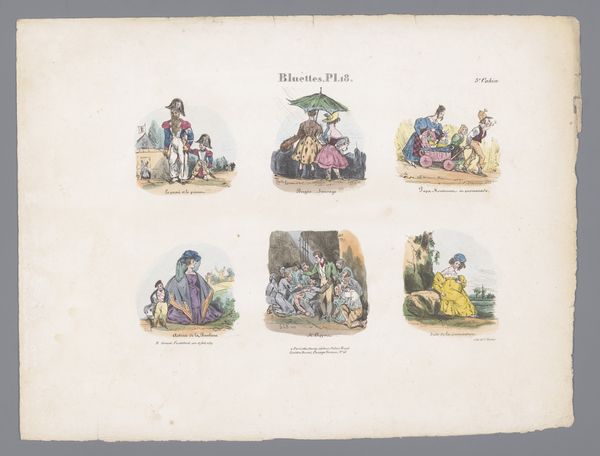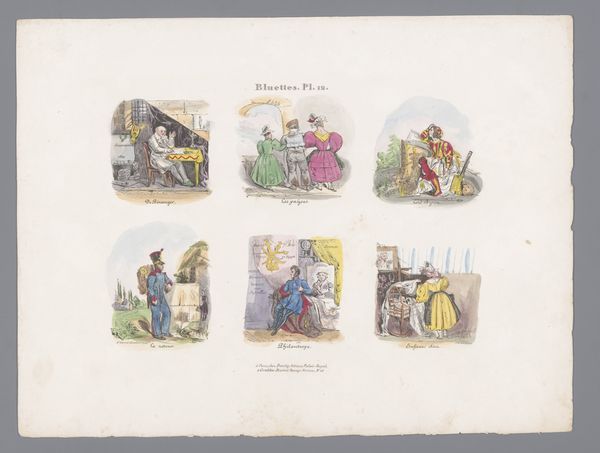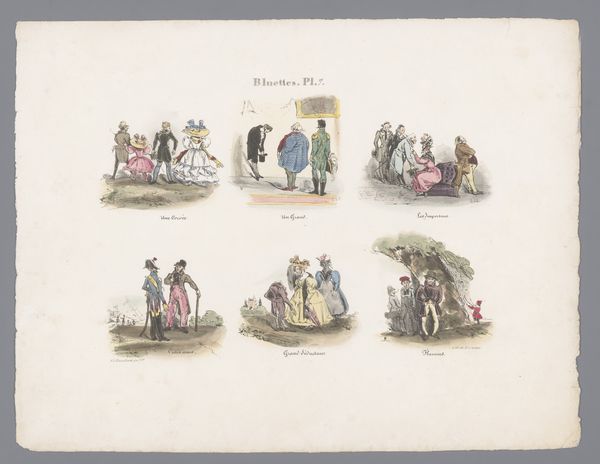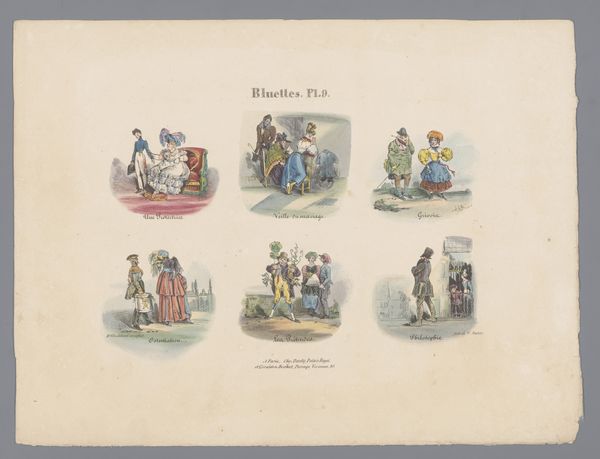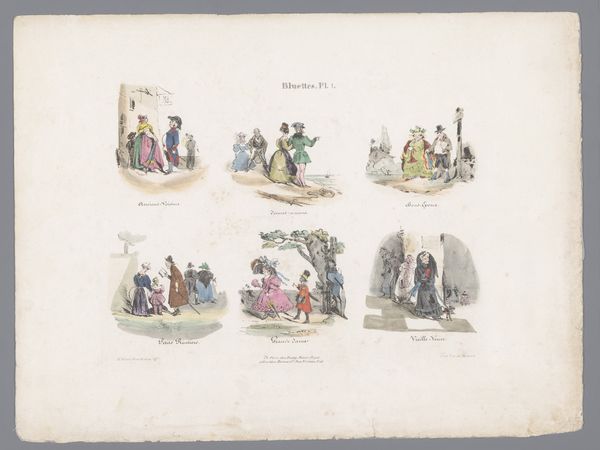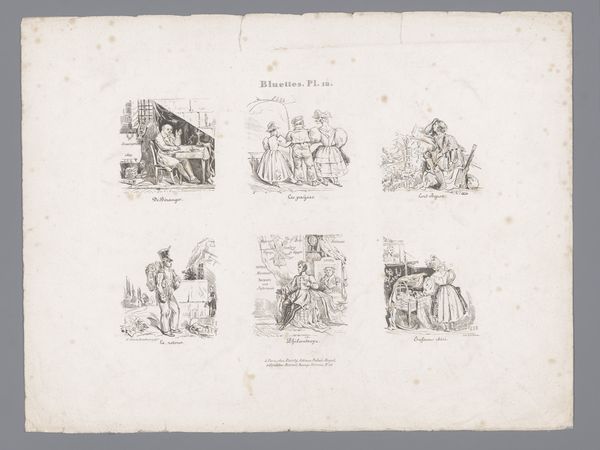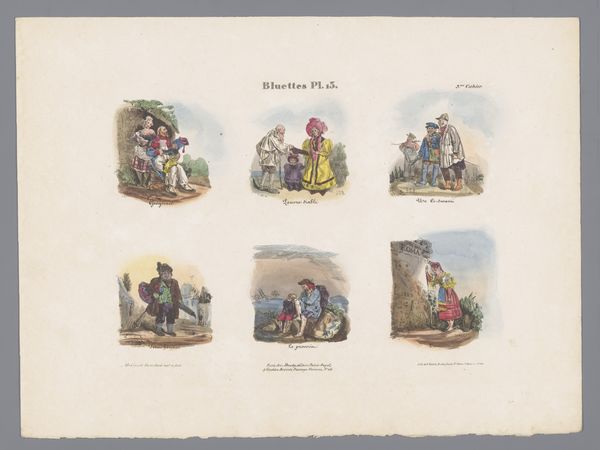
print, watercolor
#
water colours
#
narrative-art
# print
#
watercolor
#
coloured pencil
#
genre-painting
#
watercolor
Dimensions: height 277 mm, width 361 mm
Copyright: Rijks Museum: Open Domain
Curator: This intriguing print, "Zes scènes met diverse personen," by Henri-Gérard Fontallard, dates back to 1828 and presents six distinct vignettes in watercolor and colored pencil. It immediately strikes me with its delicate, almost pastel palette. Editor: It’s interesting how these individual scenes, though small and separated, still manage to convey a unified sense of early 19th-century social life. What kind of stories do you think they’re trying to tell? Curator: Each scene feels like a window into different societal archetypes or moments. The old woman, perhaps weaving stories of her own; the soldiers embroiled in what seems to be a confrontation; gossiping figures hinting at secrets and intrigues. Then there is the demure woman writing at a desk, a dark interior with laborers and two men with musical instruments on the seashore. They create a collective portrait, echoing a bygone era. Editor: Structurally, it’s fascinating how the artist has chosen to arrange them on the page. The linear arrangement almost resembles a comic strip, wouldn't you say? I wonder if the arrangement indicates a kind of sequence. Is the artist making some visual argument through the ordering of events or types? Curator: The potential narrative sequence resonates with me; such formats, which we may see echoed in later cartoons or even storyboard concepts, allowed the artist to present multiple viewpoints in a singular artwork. Fontallard's selection reflects enduring social scripts. These images serve as reminders of past ways of relating. They also function as artifacts for considering what continues across cultures. Editor: Thinking about color and form, the restrained use of hue unites them—there’s a quiet harmony, yet each retains individual narrative energy through slight chromatic shifts and compositional differences. Curator: Exactly. And this format itself speaks volumes about how we remember history, how fragmented memories coalesce to construct the cultural narratives we pass down. It brings to mind Walter Benjamin’s concept of history as a series of illuminated moments, shining light on forgotten or marginalized voices. Editor: So, the print becomes less about any single scene and more about the broader historical context? Curator: Precisely. It is a testament to the emotional weight imagery carries, linking us to ancestral experiences and shaping contemporary understanding. Editor: It seems the formal containment offers a poignant contrast to the expansive potential of social meaning woven into the watercolors and lines. A wonderful contradiction!
Comments
No comments
Be the first to comment and join the conversation on the ultimate creative platform.
